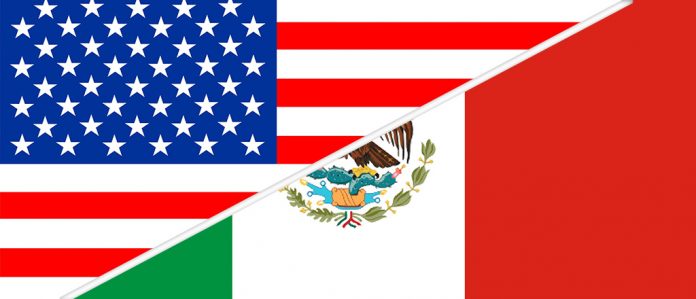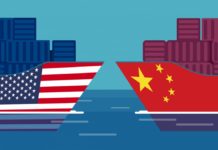
After a year of tussling with Canada and Mexico over trade issues, President Donald Trump has announced a tentative deal with Mexico to replace the much-maligned North American Free Trade Agreement (NAFTA). Many important details are unknown, in part because they remain to be negotiated. But the centerpiece of the agreement—a set of new and complex rules constraining trade in the automobile industry—could be problematic for the US auto sector, and for Mexico and Canada as well. At the least, the new rules will raise the price of autos for US consumers.
The North American auto sector could suffer an even worse blow if the Trump administration imposes new import tariffs or quantitative limits on autos and parts not covered by the new deal. According to Reuters, the administration and Mexico have also agreed to a side letter implicitly recognizing Trump may apply additional tariffs on certain “nonconforming” auto imports that don’t satisfy the deal’s onerous new rules. Still looming is a separate—and yet now economically intertwined—Trump threat of trade restrictions on autos and parts from the rest of the world, including Europe, South Korea, and Japan.
There is reason to worry that the administration may indeed slap such tariffs on everyone else: Trump’s auto deal with Mexico may not “work” at meeting even his own narrow objectives unless all of his tariffs are imposed.
What are rules of origin?
All free trade agreements have rules of origin. These set minimum amounts of local inputs used to qualify for zero tariffs for trade within the region. They are designed to prevent other countries from sneaking their parts into products and taking advantage of tariff preferences negotiated by the deal’s members.
But they come with a tradeoff. The tighter the rules, the greater the incentive for car companies to source parts from within North America, generating regional jobs. But the looser the rules, the easier it is for companies to buy the cheapest inputs they possibly can, helping to keep prices low for North American consumers and allowing companies to remain cost-competitive with cars made outside the bloc. And that competition is not only for American or Mexican consumers; access to the growing export markets in Asia, Europe, and South America has been increasingly important for the North American auto industry.
What has been agreed?
The original NAFTA already had relatively restrictive rules of origin in place. The headline regulation required 62.5 percent of the value of a car be made from regional content in order to cross the border from Mexico into America tariff-free.
Trump’s deal with Mexico makes those regulations even tighter. The administration claims that agreed minimum content has been increased to 75 percent. And a second and newly-added Trump requirement is that 40 to 45 percent of the value of a car will have to be produced by workers earning at least $16 per hour. As more of the agreement’s details are released, carmakers may find they will need to jump through additional costly hoops to access the entire North American market tariff free.
What would be the effect on existing production?
Even the Mexican government estimates that 30 percent of cars currently produced in Mexico and exported to the United States do not contain sufficient North American content to satisfy the new deal’s requirements. Trump’s tighter rules of origin are expected to force carmakers to remake their supply chains and rethink their business strategy for acquiring parts.
Importantly, it may create two diametrically-opposed choices for how to respond.
Some companies may rework their supply chains to meet the new rules so that they continue to access free trade in the region. They will have to take on new costs—which cars made outside the region will not—whose only benefit is continued access to the zero tariff. And these are not the kinds of costs leading to tangible consumer gains—i.e., don’t expect increased fuel efficiency, safer vehicles, or additional creature comforts.
But perversely, a second possibility is that Trump’s new regulations will be so costly that companies decide to source even less content from North America. To keep cars priced at levels consumers are willing to pay, some automakers may buy more parts from Asia or Europe, where they are cheaper. The consequence of not meeting the rules is that, even if the car is assembled in Mexico, it would now be subject to the 2.5 percent “regular” tariff required to cross the border into the United States. That 2.5 percent tax is the one that Americans pay to purchase a car built in Japan or the European Union—countries with which the United States does not have a free trade agreement.
How might the Trump administration deal with the unintended consequences?
Suppose the Trump team has massively miscalculated how costly it will be for auto companies to comply with the deal’s new rules so that the second possibility—forgoing the zero tariff—becomes the carmakers’ only economically viable option.
This leads to the first big policy worry: Trump increases the regular tariff above 2.5 percent for autos that do not conform with those cumbersome requirements that his trade team created. Without that tariff increase, his administration’s use of brute force to keep regional content in North American cars might not even work.
Procedurally, how does Trump raise the tariff on nonconforming auto imports from Mexico? Waiting in the wings is his now go-to story that imports threaten American national security. Under Section 232 of the Trade Expansion Act of 1962, his Commerce Department has indicated it would soon complete an investigation that is likely to grant him the legal authority to increase the tariff—from 2.5 percent to 20 percent, 25 percent, or whatever level he chooses—on imports of any car or part from any trading partner. Or he could impose quantitative limits on imports, such as the tariff-rate quota that has been reported as part of the US-Mexico side letter.
Trump has already exercised this legal authority to impose “national security” tariffs and quotas on $48 billion of steel and aluminum imports, most of which come from America’s economic and military allies. He went ahead despite an advanced warning that Canada, the European Union, and others would impose costs on America by retaliating with new duties hitting more than $25 billion of US exports of agricultural and manufactured products. He imposed those tariffs on Canada, against the wishes of unions and even the US-based Aluminum Association.
What would the wider fallout be?
Tighter rules of origin, potentially combined with import restrictions on nonconforming autos, would mean higher consumer prices for Mexican or American-made cars. Such a price increase would trigger a natural incentive for Americans to switch to relatively cheaper cars assembled outside of the region that are not subject to Trump’s costly new regulations.
But even if generated by his own policy, Trump is unlikely to accept that his “achievement”—fewer car imports from Mexico—is so easily offset by a simple trade diversionary replacement of more car imports from Japan, Europe, and South Korea.
So, here arises the second big worry. Under that same Section 232 legal authority, Trump may be sorely tempted to slap trade restrictions on auto imports from those other countries, simply to quell the additional import demand created by the details of his trade deal with Mexico.
Imposing national security tariffs on auto imports from the European Union would, of course, likely end the détente established in his July 25 meeting with European Commission president Jean-Claude Juncker. Gone would be their mutual promise not to impose additional tariffs on one another.
Why would Mexico (and potentially Canada) accept Trump’s deal on autos?
While this part of the agreement may turn out worse than the original NAFTA rules for autos, Mexico and Canada have cause for concern: Trump has implemented policies that show just how far he is willing to go to make economic conditions even worse for trading partners.
His tariffs on $15 billion of steel and aluminum imports from Canada and Mexico demonstrate his willingness to inflict considerable harm not only on them, but also on American industry. Even though Trump’s threat to impose 25 percent tariffs on vehicles imported from Mexico and Canada may be equally detrimental to America’s own interests, it is now all too credible.
So, is Trump’s strategy with Mexico a success?
Some US automakers and workers may benefit from Trump’s costly new rules of origin—backstopped by his threat of imposing trade restrictions on cars coming from outside of North America. There could be more local content and less direct competitive pressure from imports from Japan, South Korea, or Europe.
But these “gains” are more than likely offset by their economic downside. Rising costs imply higher prices for American consumers. Equally important is North America’s deteriorating competitiveness as a global export platform for carmakers. As consumer growth in North America slows, these companies are evaluating where they can produce competitively in order to access emerging markets in Asia, South America, and elsewhere. Clunky new rules and higher costs make America, Mexico, and Canada a considerably less attractive hub.
Trump’s success at bullying another country to accept a mutually bad trade deal is not an economic achievement. Foreign politicians may appease the White House to avoid a worse outcome. But that should not be confused with good policy.
For a discussion of the latest developments in the renegotiation of the NAFTA, tune in to the next episode of Trade Talks with Soumaya Keynes (The Economist) and Chad P. Bown.






